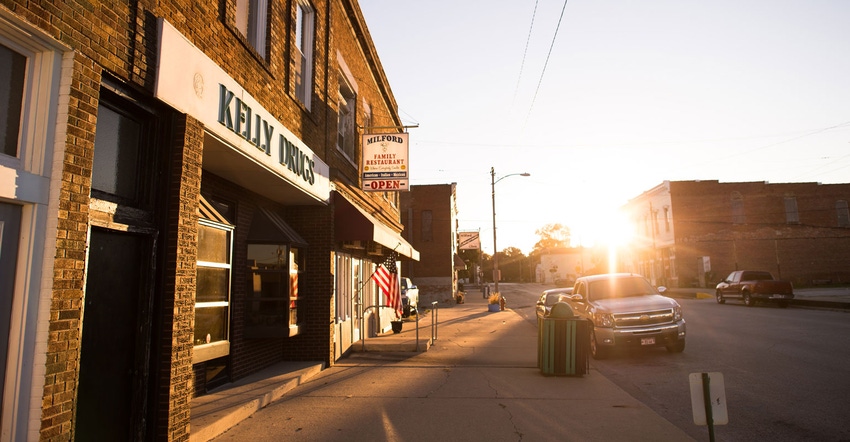June 19, 2020

What do livestock folks do when they need practical answers? They call the vet.
That’s why I was on the phone with University of Illinois veterinarian and infectious disease expert Jim Lowe this week, after one more news story on COVID-19 didn’t add up. The last straw was when no news outlet could agree on whether reopening state economies made for an infection surge, or whether bigger numbers came from more testing.
Related: Complete coronavirus coverage
As a cattle producer, there’s something calming about talking to a good veterinarian.
They’re problem-solvers, a skill honed during years of arriving on a farm with few resources beyond themselves and whatever’s on their truck. The best ones analyze and present solutions, with relentless practicality.
Sure enough, Lowe says yes, scientists have learned a few things the past few weeks. Like, that transmission occurs with extended exposure. That social distancing 5 to 6 feet helps minimize the spread. That wearing a mask contains droplets. That temperature screening doesn’t always prevent infection.
We also know that a small number of people are responsible for the vast majority of infections. Lowe calls them “super spreaders.” But we don’t know who they are, which is really the problem with avoiding them. And with deciding how to open up the economy.
Take pigs, for example, Lowe’s specialty. With a disease outbreak in pigs, you’d design different practices for low-density populations than you would for high-density populations, because disease transmits more quickly there.
It’s the same thing in humans. You need a different design.
Compare the four regions of Illinois in the governor’s Restore Illinois plan, where positivity rates peaked in Southern Illinois at 16% on April 23; Central Illinois peaked below 8% on April 2; the North Central Region peaked just under 12% on April 22. Meanwhile, the Chicago region peaked at 28% on April 14 and stayed above 20% through May 11. In other words, that means more than 1 in 5 people who got tested in the Chicago region came back positive, for nearly a month.
Lowe says within small cities, you have to differentiate as well: Champaign and Effingham are different, because Champaign has a student population that’s closely connected to Chicago. Effingham, less so. To date, Champaign County has 754 cases; Effingham County has 9.
Back to the barn: Imagine a revolving door of new pigs coming in and joining the herd.
Elusive 5th phase
So, what do you do? That’s where the veterinarian gets practical.
“We don’t need to be home every day. That doesn’t make a lot of sense,” Lowe says. Go to work, be smart, be vigilant, pay attention to detail. Wear a mask. Social distance.
But also, apply some common sense to the economy. Why can some businesses be open when others can’t? Why is a big box store less risky than a small hardware store? (Spoiler alert: It’s not.)
“The world needs to be different, but I think we need to get back to business,” Lowe told me.
As of June 19, the entirety of Illinois is in Phase 3 of the governor’s five-phase Restore Illinois plan.
Phase 3 means no gatherings over 10 people; Phase 4 means no gatherings over 50 people; Phase 5 is a complete reopening of the state. But getting to Phase 5 takes an effective vaccine. “Effective” is the kicker, Lowe says, adding that companies promise a vaccine by fall, but we won’t know if it’s effective until mid-2021.
“If this were animals, we’d vaccinate some animals and then we’d go challenge them,” he says. “But that’s really unethical in humans.”
Despite promises of a regional response to the pandemic, it’s become clear each region will likely move forward together, no sooner than every 28 days — despite calls from downstate politicians and Illinois Farm Bureau to switch to a 14-day standard.
The governor appears immoveable.
Practical solutions
What about other states that have opened up and seen rising infection rates? Look at Arizona, where cases tripled in the month after the state opened up. But Lowe says it’s uncertain whether opening up caused the spike — or whether COVID-19 just hadn’t gotten there yet.
“This is the problem with not enough testing. The assumption is that cases are going up really rapidly,” he explains but questions, “is it because they opened up or because they weren’t infected yet?”
That applies to rural Illinois, too. Scott County hasn’t had a single case yet. Thirty counties still clock in at less than a baker’s dozen. Lowe says there’s a real possibility they’ll go through “a burp of virus” at some point.
Could a bunch of us have already had COVID-19? Lowe says none of the data would suggest that’s true.
It’s tough because a lot of us were sicker this past winter than we’d ever been before — and wouldn’t it be great if that was COVID-19 and now we’re (hopefully) immune? Lowe’s wife thought so, too, but he said nah.
“’You just snotted at the nose like a good sick pig!’” he recalls telling her, adding, “That made me ineligible for the Husband of the Year Award.”
But really. He says there’s no evidence to suggest that rural Illinois or rural anywhere would have higher antibody rates than anywhere else. Plus, COVID-19 antibody tests aren’t reliably accurate yet.
So in the spirit of a good country veterinarian, what do we want for rural Illinois?
Develop an approach that’s reasonable and sustainable over the long haul. Because staying home for another year is not sustainable.
Take effective precautions. Stay 5 to 6 feet apart. Wear a mask in group settings.
And when we see upticks, aggressively test, trace back and quarantine local regions to stop the spread.
Analyze and present solutions, with relentless practicality. That’s why I called the vet.
Comments? Email [email protected].
Read more about:
Covid 19You May Also Like




